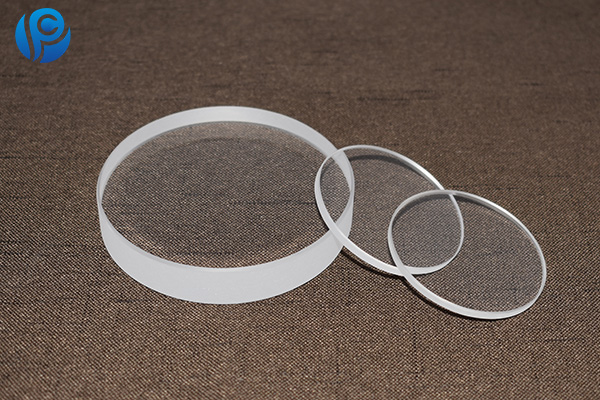The difference between quartz glass and ordinary glass and its characteristics
Click:
-Time:2019-08-05 14:10
The difference between quartz glass and ordinary glass and its characteristics
Quartz glass has a hardness of up to seven grades, and it has advanthigh temperature resistance, low expansion coefficient, thermal shock resistance, chemical stability and electrical insulation properties, and can transmit ultraviolet and infrared rays. In addition to hydrofluoric acid and hot phosphoric acid, it has good acid resistance to common acids. Divided into two categories, transparent and opaque. According to the purity, it is divided into three categories: high purity, common and doped. Quartz glass uses high-purity silica sand as a raw material. The traditional method of fabrication is the melt-quench method (heating the material to the melting temperature and then rapidly cooling to the solid phase of the glass); making transparent glass with ultra-high purity and UV transmittance requires silicon. The process of vaporization, oxidation into silica and heating and dissolution. Today, let's take a look at the difference between quartz glass and ordinary glass: 1. Color: Quartz glass is a single component glass of silica, so it must be colorless. Ordinary glass generally has some colors. 2. Flame calcination: It can be calcined at a temperature of more than one thousand degrees with a hydrogen oxygen flame, etc. It is quartz glass which is softened and burned and colorless. Quartz glass has a very low coefficient of thermal expansion, high temperature resistance, excellent chemical stability, excellent electrical insulation, low and stable ultrasonic delay properties, UV-transparent spectral properties, and visible and near-infrared spectroscopy properties. And has a higher mechanical properties than ordinary glass. Therefore, it is one of the indispensable materials in the modern technology of space technology, atomic energy industry, national defense equipment, automation system, and semiconductor, metallurgy, chemical, electric light source, communication, light industry, building materials and other industries.

Quartz glass sheet with high temperature resistance: Quartz glass has a softening point temperature of about 1730 ° C. It can be used for a long time at 10 ° C. The short-time high operating temperature can reach 1450 ° C. The transparency of quartz sheet is good: the quartz sheet is in the entire spectral band from ultraviolet to infrared. It has good light transmission performance, and the visible light transmittance is above 93%, especially in the ultraviolet spectral region. The transmittance is up to 80. The quartz plate is corrosion resistant: except for hydrofluoric acid, quartz glass is hardly compatible with other acids chemical reaction of matter, its acid resistance is 30 times that of ceramics, 150 times that of stainless steel, especially at high temperatures. It is a thermal stability of quartz plates that cannot be compared with any other engineering materials: the thermal expansion coefficient of custom glass It is extremely small and can withstand severe temperature changes. The quartz glass is heated to about 10 ° C and will not burst when placed in normal temperature water.
If you are interested in the quartz glass or need to consult, please click on our online customer service, or call us.
Pan Chao, customized different quality specifications of the glass.
Pan Chao special industrial glass, tailored for your different quality of the glass.
Welcome sending your inquiry: Phone : +86 13569413718 Email: info@panchaoglass.com
If you are interested in the quartz glass or need to consult, please click on our online customer service, or call us.
Pan Chao, customized different quality specifications of the glass.
Pan Chao special industrial glass, tailored for your different quality of the glass.
Welcome sending your inquiry: Phone : +86 13569413718 Email: info@panchaoglass.com
Next:Introduction to cold working process of quartz glass Pre:none
Related articles
- What is optical glass
- Development history of aluminum silicon glass
- The best transparent polymer glass
- Classification of glass tube mirrors
Recommend
- Introduction to Borosilicate Glass
- High Temperature Resistant Glass: protecting world under extr
- High Temperature Resistant Glass: protecting world under extr
- High Temperature Resistant Glass: protecting world under extr
- What is optical glass
- Development history of aluminum silicon glass
- The best transparent polymer glass
- Classification of glass tube mirrors
- What is a mirror glass
- What is high-temperature glass
Rank
- Application of high temperature resistant glass
- Precautions in the process of quartz tube cutting and picklin
- Introduction to Borosilicate Glass
- The difference between high borosilicate glass, medium borosi
- High Temperature Resistant Glass: protecting world under extr
- High Temperature Resistant Glass: protecting world under extr
- High Temperature Resistant Glass: protecting world under extr
- What Glass Has the Highest Temperature Resistance
- What are the advantages and disadvantages of quartz tube heat
- Comparison Between LOW-E Glass and Ordinary Insulating Glass
Latest articles
- Introduction to Borosilicate Glass
- High Temperature Resistant Glass: protecting world under extr
- High Temperature Resistant Glass: protecting world under extr
- High Temperature Resistant Glass: protecting world under extr
- What is optical glass
- Development history of aluminum silicon glass
- The best transparent polymer glass
- Classification of glass tube mirrors
- What is a mirror glass
- What is high-temperature glass

